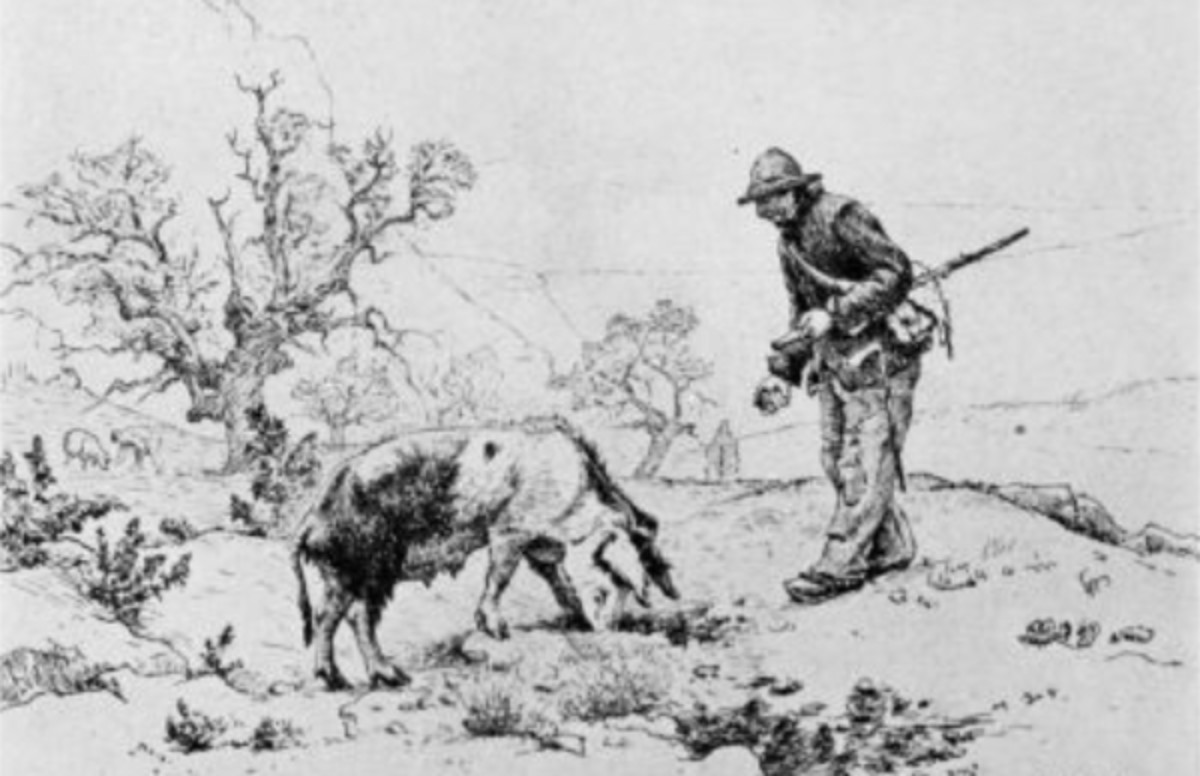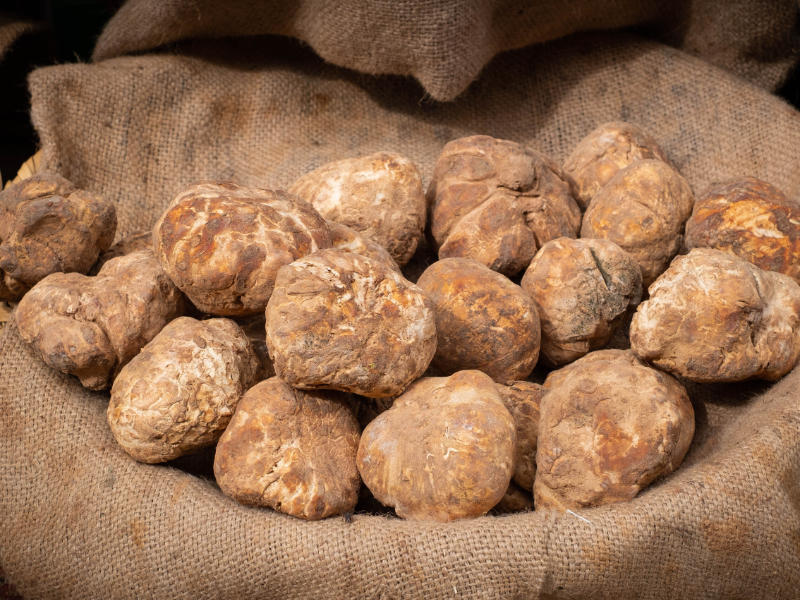The History of truffles!
Truffles have an intriguing history packed full of magic and mystery. From Gods and Goddesses to Kings and Roman Philosophers, their journey is one of ups and downs and sometimes tragedy with many questions left unanswered. Read on to find out when truffles were discovered, where they come from, their journey through the ages and where they are today.


When were truffles discovered?
Truffles have been around for more than 200 million years, far longer than humans, but the first mention of truffles appears in the inscriptions of the Sumerians, nearly four thousand years ago, regarding the eating habits of their enemy, the early Ancient Egyptians.
They are described as being enjoyed as an entrée, coated in goose fat.
Where do truffles originate from?
Truffles are found all over the world however, only a few of the more than 200 tuber species are prized for their culinary qualities and most of these originate from Europe.
Black Truffles, or Tuber Melanosporum were found throughout Southern Europe but mostly France, and the Perigord Region made them their own.
The prized White Truffle or Tuber Magnatum was mostly found in the Piedmont Region of the Italian Alps, but also throughout Croatia, Serbia, and Hungary.
The Black Summer Truffle or Tuber Aestivum was found all throughout Europe from Southern France all the way to Britain and Sweden.
Truffles throughout the ages
During Roman times, it was believed that truffles were sent down as gifts to humanity through the lightning bolts of Zeus, the God of Thunder.
This interpretation is understandable considering the burnt patches of earth around the base of trees caused by the truffle mycelium and the correlation between lightning storms and truffle production.
Due to the chemical reaction caused by lightning, rain from summer storm clouds is more nitrogen rich, which truffles love.
This results in higher truffle yields.
The Romans were fascinated by truffles claiming that they were adored by Aphrodite, the Goddess of Love. Truffles were a hot topic during the first century in the writings of Philosophers such as Plutarch and the great satirist poet Juvenal.
Not all were impressed with truffles and their seductive appeal.
Throughout the Middle Ages, truffles virtually disappeared by order of the churches who felt that they were the creation of the devil.
This was due to people’s insatiable desire for their exotic aroma. Some even believe truffles to be an aphrodisiac.
During the Renaissance, truffles made a comeback through the reign of kings such as Louis XIV, who was mad about truffles and had lavish parties eating truffles in huge quantities.
He not only saved them from obscurity, but also set out to cultivate them, which proved to be unsuccessful.
Truffles gained in popularity until the mid-1800’s where truffles experienced their largest production to date.
Over 2,000 tons of truffles were harvested throughout Europe.
This abundance was once again short lived. During the World Wars, many of the rural lands and natural environments where truffles were found were destroyed and the farmers and forages were lost to the war, taking with them their knowledge. As a result, truffle production fell dramatically until it reached its lowest point by the 1960s.


Current Truffle Production
Over the past 50 years, truffle cultivation has undergone a global expansion giving rise to plantations in all corners of the globe.
Today, the United States, China, Greece, and Turkey as well as countries across the Southern Hemisphere such as Australia, New Zealand, South Africa, Chile and Argentina have emerged as new producers of the sought-after fungi.
Global truffle production has exploded in recent years thanks to this increase in cultivation but natural production is still falling dramatically.
This is thought to be due to less availability of natural wilderness, pollution, and removal of spores through excessive harvesting.
The majority of truffles produced in the world today are made up of Tuber Melanosporum and Tuber Aestivum. Spain currently leads world production of truffles.
Tuber Magnatum, the world’s most sought-after truffle, is yet to be cultivated successfully anywhere in the world.
Published: August 04, 2023
The History of truffles!
Truffles have an intriguing history packed full of magic and mystery. From Gods and Goddesses to Kings and Roman Philosophers, their journey is one of ups and downs and sometimes tragedy with many questions left unanswered. Read on to find out when truffles were discovered, where they come from, their journey through the ages and where they are today.

When were truffles discovered?
Truffles have been around for more than 200 million years, far longer than humans, but the first mention of truffles appears in the inscriptions of the Sumerians, nearly four thousand years ago, regarding the eating habits of their enemy, the early Ancient Egyptians.
They are described as being enjoyed as an entrée, coated in goose fat.
Where do truffles originate from?
Truffles are found all over the world however, only a few of the more than 200 tuber species are prized for their culinary qualities and most of these originate from Europe.
Black Truffles, or Tuber Melanosporum were found throughout Southern Europe but mostly France, and the Perigord Region made them their own.
The prized White Truffle or Tuber Magnatum was mostly found in the Piedmont Region of the Italian Alps, but also throughout Croatia, Serbia, and Hungary.
The Black Summer Truffle or Tuber Aestivum was found all throughout Europe from Southern France all the way to Britain and Sweden.
Truffles throughout the ages
During Roman times, it was believed that truffles were sent down as gifts to humanity through the lightning bolts of Zeus, the God of Thunder.
This interpretation is understandable considering the burnt patches of earth around the base of trees caused by the truffle mycelium and the correlation between lightning storms and truffle production.
Due to the chemical reaction caused by lightning, rain from summer storm clouds is more nitrogen rich, which truffles love.
This results in higher truffle yields.
The Romans were fascinated by truffles claiming that they were adored by Aphrodite, the Goddess of Love. Truffles were a hot topic during the first century in the writings of Philosophers such as Plutarch and the great satirist poet Juvenal.
Not all were impressed with truffles and their seductive appeal.
Throughout the Middle Ages, truffles virtually disappeared by order of the churches who felt that they were the creation of the devil.
This was due to people’s insatiable desire for their exotic aroma. Some even believe truffles to be an aphrodisiac.
During the Renaissance, truffles made a comeback through the reign of kings such as Louis XIV, who was mad about truffles and had lavish parties eating truffles in huge quantities.
He not only saved them from obscurity, but also set out to cultivate them, which proved to be unsuccessful.
Truffles gained in popularity until the mid-1800’s where truffles experienced their largest production to date.
Over 2,000 tons of truffles were harvested throughout Europe.
This abundance was once again short lived. During the World Wars, many of the rural lands and natural environments where truffles were found were destroyed and the farmers and forages were lost to the war, taking with them their knowledge. As a result, truffle production fell dramatically until it reached its lowest point by the 1960s.

Current Truffle Production
Over the past 50 years, truffle cultivation has undergone a global expansion giving rise to plantations in all corners of the globe.
Today, the United States, China, Greece, and Turkey as well as countries across the Southern Hemisphere such as Australia, New Zealand, South Africa, Chile and Argentina have emerged as new producers of the sought-after fungi.
Global truffle production has exploded in recent years thanks to this increase in cultivation but natural production is still falling dramatically.
This is thought to be due to less availability of natural wilderness, pollution, and removal of spores through excessive harvesting.
The majority of truffles produced in the world today are made up of Tuber Melanosporum and Tuber Aestivum. Spain currently leads world production of truffles.
Tuber Magnatum, the world’s most sought-after truffle, is yet to be cultivated successfully anywhere in the world.
Published: Auguest 04, 2023